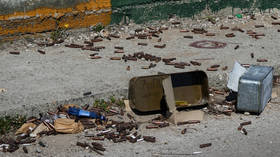‘Hothouse Earth’: Planet will become ‘uninhabitable’ if climate tipping point reached, study finds

The world is perilously close to moving into irreversible “hothouse” conditions with global average temperatures climbing as much as 4-5 Celsius — even if emissions reduction targets are met, according to a new study.
A group of scientists from the Stockholm Resilience Centre, the University of Copenhagen, the Australian National University and the Potsdam Institute for Climate Impact Research said that there were certain “tipping points” that could lead to abrupt changes one after the other.
Thawing of permafrost, the loss of methane hydrates from the ocean floor, loss of Arctic summer sea ice, the shrinking of the Antarctic sea ice and polar ice sheets and weaker land and ocean carbon sinks are among the processes that could combine to produce irreversible change, they said.
“These tipping elements can potentially act like a row of dominoes. Once one is pushed over, it pushes Earth toward another,” said Johan Rockström, who co-authored the report which was published in the Proceedings of the National Academy of Sciences.
Rockström said it may be “very difficult or impossible” to stop the whole row of dominoes from tumbling over once it begins. “Places on Earth will become uninhabitable if ‘Hothouse Earth’ becomes the reality,” he said.
The scientists said that reducing greenhouse emissions was not enough to prevent the “hothouse” state from coming about. They said it required improvements in soil management in agriculture and forestry, improved biodiversity conservation and more emphasis on types of technology that remove carbon dioxide from the air and store it underground.
Average global temperatures are slightly more than 1 Celsius above the pre-industrial period, but are rising about 0.17 every decade. The study said it was not clear whether the climate could be safely “parked” at around 2 Celsius higher than pre-industrial levels, or whether other warming events would be triggered — even if the world stopped emitting greenhouses gases.
In 2015, as part of the the Paris Climate Agreement, 200 countries agreed to work to limit the Earth’s temperature rise to “well below” the 2 Celsius tipping point.
READ MORE: Trump announces US withdrawal from Paris climate change deal
The research comes as Europe experiences record summer temperatures, climbing above 40 degrees in some places, leading to droughts and sparking dangerous wildfires. Phil Williamson, climate researcher at the University of East Anglia, said that given recent weather events, the report was not an exaggeration.
“In the context of the summer of 2018, this is definitely not a case of crying wolf, raising a false alarm: the wolves are now in sight,” he said.















